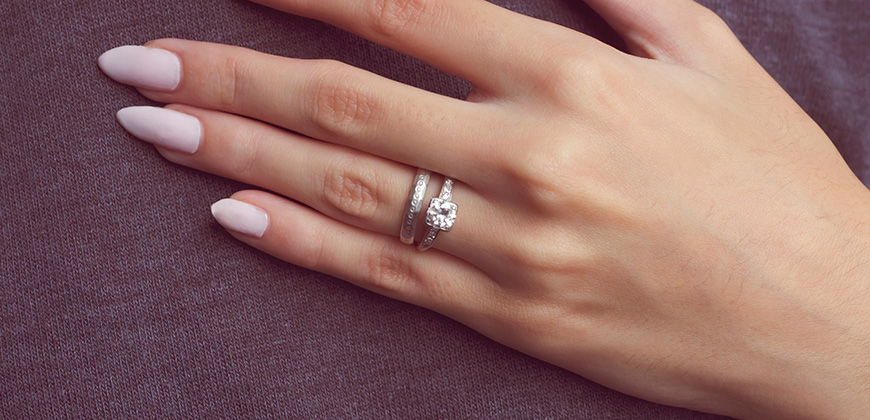
All diamonds are formed deep beneath the Earth’s crust, right? Not quite. While this is true for natural diamonds, lab-grown diamonds are not formed underground. But where exactly are lab-grown diamonds made? When did lab-grown diamonds start? And what is the history of lab-grown diamonds?
Lab-grown diamonds are precisely what the name suggests—diamonds formed in laboratories! While natural diamonds form in the depths of the Earth's surface over millions of years, lab-grown diamonds are created by humans in just a few weeks to a few months, depending on the method used.
Think of lab-grown diamonds like the studio version of a song produced in a controlled environment, with every element fine-tuned to be just right. On the other hand, natural diamonds are more like a live performance—a little more unpredictable, with unique quirks and imperfections.
Initial Discoveries and Failed Attempts
Rome wasn’t built in a day, and neither were lab-grown diamonds. Edison claimed he had more than 1,000 failed attempts before inventing the lightbulb. Lab-grown diamonds followed a similar path. In the late 1880s and early 1900s, many inventors and chemists attempted to create the first synthetic diamonds (with some falsely claiming success). However, none of their methods could be reproduced and were therefore not scientifically validated.
In the 1920s through the 1940s, many large corporations also had many failed attempts at “full-grown” lab diamonds, succeeding only with creating tiny crystals (not great for jewelry making!). Even before their eventual lab-grown diamond successes, General Electric (GE, story below) had years of unsuccessful experiments, struggling to find the perfect temperature and pressure balance to replicate the natural process.
The First Lab-Grown Diamonds
If we’re going to give credit where credit is due, let’s look at a few early lab-grown diamond efforts that laid the foundation for the lab-grown diamonds we know today.
People have been interested in lab diamond production since Antoine Lavoisier discovered they were pure carbon in 1772. Evidence of these early efforts appears throughout history, including in H.G. Wells’s 1894 short story The Diamond Maker, where he wrote of using high temperatures and pressure to create a diamond. This concept would become the foundation for lab-grown diamond success 60 years later.
Throughout the 19th century, many attempts were made at the artificial creation of diamonds. Again, while many claimed to have succeeded, those methods could not be replicated to produce a diamond until 1954 and GE's 'Project Superpressure.' This was GE's first synthetic diamond success, using the technique known as HPHT (High Pressure, High Temperature), which perfectly recreated the natural conditions deep within Earth (where natural diamonds are formed). If you're wondering precisely when lab-grown diamonds were introduced, this is that moment! This achievement marked a significant scientific milestone and sparked interest in synthetic gemstones around the world.
Technique and Quality Improvement
The breakthrough of GE’s HPHT process was significant because it proved that human-made diamonds were possible, opening the door to innovations in both industrial and gem-quality stones. Improvements to HPHT occurred in the 1980s and 1990s, creating better-quality diamonds. However, at this time, it was still primarily for industrial use (such as toolmaking and technology uses).
By the early 2000s, a new method known as CVD (Chemical Vapor Deposition) was introduced, allowing for better control of the diamond’s color and purity by growing the diamond layer by layer from carbon-rich gas. With 60 years of trial and error behind them, lab-grown diamonds became mainstream in the 2010s, with major jewelry brands embracing the "new" method of diamond formation. And, by the 2020s, advanced energy-efficient techniques began allowing for custom measurements and greater control over the lab diamond production, further impacting clarity, color and overall quality.
Generally, CVD-grown diamonds are more likely to have better color and clarity, while HPHT diamonds can sometimes show a slight blue tint due to the presence of boron. This blue tint is often very faint or invisible to the naked, untrained eye. Interestingly, though, HPHT-grown diamonds tend to have a higher price tag as this process is more complex and requires larger, more energy-intensive equipment. It’s important to note that despite their differences, each diamond-growing method can produce high-quality or lower-quality stones, simply depending on conditions like temperature, pressure, and chemical composition.
How Lab-Grown Diamonds Revolutionized the Industry
Since lab-grown diamonds are such a convincing imitator of natural diamonds, they have risen in popularity and changed the diamond industry for several key reasons:
- Environmentally conscious. Lab-grown diamonds have a smaller environmental footprint, requiring less land disruption and water use than traditional mined diamonds.
- Greater customization. Because they’re made in controlled settings, lab-grown diamonds can be tailored to exact specifications in size, shape, clarity and color.
Where to Buy Lab-Grown Diamonds
Lab-grown diamonds, once a much smaller percentage of diamonds sold, can now be found in everything from engagement rings to fashion jewelry. Lab-grown diamonds are increasingly popular and widely available from major online retailers and local jewelers to luxury brands and independent designers.
Now, don’t think that these diamonds are just lying around on street corners! They can still be hard to find if you're looking for a specific cut or rare carat size. You may also want to ask for a gemstone certification (yes, lab-grown diamonds can be certified, too!) and for any details the seller may have regarding the growth method used (HPHT or CVD), as this can impact appearance and pricing.
Insure Your Lab-Grown Diamonds with Jewelers Mutual
Whether your sparkling diamond originated in the depths of the Earth’s mantle or was made by humans in a lab, it’s always a good idea to get your valuable jewelry pieces insured. You can insure lab-grown diamonds just like you insure mined ones! Obtaining personal jewelry insurance through Jewelers Mutual is affordable and covers loss, damage and disappearances. You can check your rate by clicking the button below.